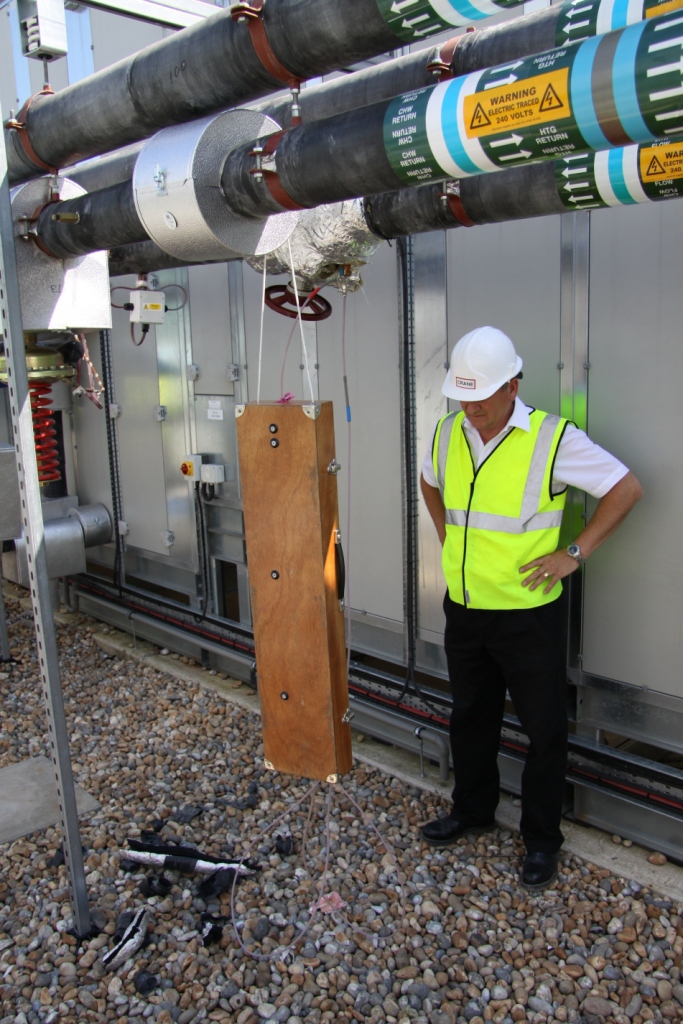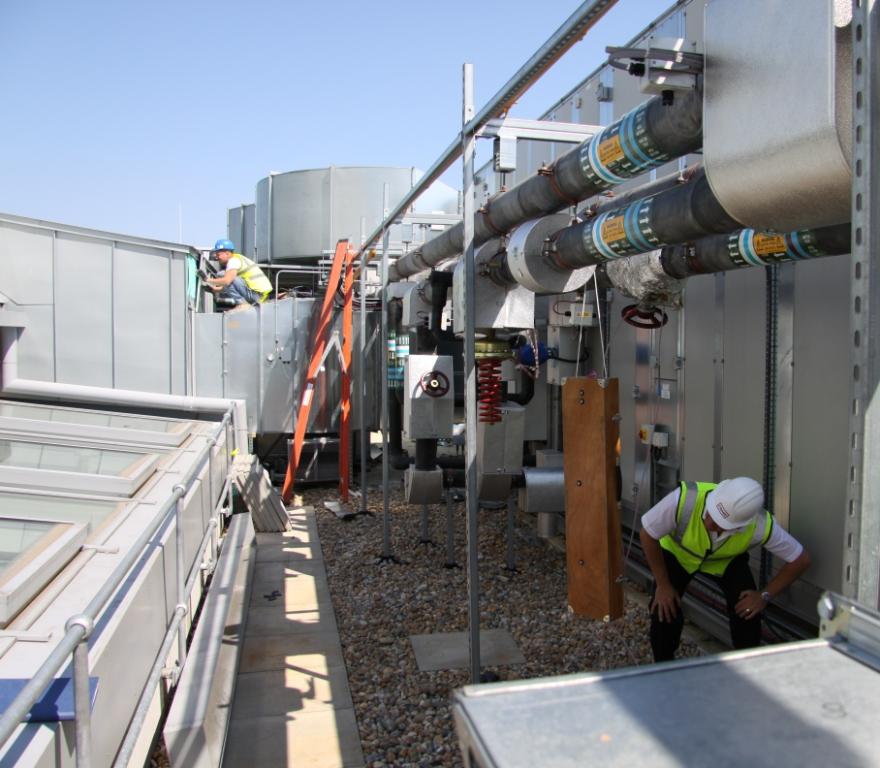AN END TO PROPORTIONAL BALANCING? - BY ANDY LUCAS, TECHNICAL DEVELOPMENT MANAGER, CRANE BS&U
July 26, 2011

In the world of FMCG, fads come and go all the time. The commissioning industry is less exaggerated but changes to practices are still being experienced. When asked will we see an end to proportional balancing, my initial thoughts were ‘not in my lifetime’, but perhaps this is tempting fate?
 Proportional balancing has existed since the 1960s but the CSA (Commissioning Specialists Association) produced its first compendium to outline best industry practice in the early 1990s.Throughout the world, it is a widely used method of balancing a system and involves adjusting terminal units, branches and risers in order to bring them all into the same proportion of the required flow rate (design flow rate) and then regulating the actual flow rate to achieve the stated design requirements.
Proportional balancing has existed since the 1960s but the CSA (Commissioning Specialists Association) produced its first compendium to outline best industry practice in the early 1990s.Throughout the world, it is a widely used method of balancing a system and involves adjusting terminal units, branches and risers in order to bring them all into the same proportion of the required flow rate (design flow rate) and then regulating the actual flow rate to achieve the stated design requirements.
Although the PICV (Pressure Independent Control Valve) has been around for 60 years or more in industrial applications, the emergence of the PICV in the building services market, has initiated the question;
…..will proportion balancing disappear?
Before we can give this some serious thought we need to take a few steps back and consider heating and chilled water system design, and question how we got to the current position, where we are now, and where we are going.
History
Up to the turn of the century, most systems were still constant volume, albeit variable pumps were starting to be installed. The UK government and industry bodies strongly encouraged the use of variable speed pumps in an attempt to reduce energy consumption. However, this did not have the desired effect; whilst variable speed pumps were installed and financial incentives accepted, they were still being set as constant speed pumps – not much energy saving there!
Today
However, by 2010 the government had implemented stronger regulations and building owners had realised the cost benefits of the energy saved. Almost all new projects in the UK we were seeing variable volume system design. The majority, probably 95% plus, were designed with Differential Pressure Control Valves (DPCV) protecting small sub-circuits of terminal units. Each of these sub-circuits still required the terminal units to be proportionally balancedagainst each other. This created no real change for the commissioning engineer, other than once the sub-circuit was proportionally balanced and the DPCV set, then it remained in balance irrespective of system pressure fluctuations. In some cases, systems incorporating DPCVs aided the commissioning process because it allowed the commissioning engineer to balance parts of the system as the installation progressed.
The introduction of the PICV has had a greater impact on the commissioning process, and will further change it in the future. As its name implies, the PICV is ‘pressure independent’. It has its own pressure control mechanism which is designed to hold a constant pressure and hence a constant flow rate across the seat area of the valve.
PICVs will generally be installed on each terminal unit to independently regulate each one. The PICV will be set to the specified flow rate and the differential pressure control mechanism within the valve will ensure that the flow rate remains constant. This therefore removes the need for proportionally balancing the terminal units.
However, we should remember that we still need proportional balancing in a couple of situations. Firstly, where PICVs are installed in circuits with more than one terminal unit (i.e. two or three chilled beams) there could still be the need to proportionally balance these terminal units against each other. Also, although systems are now designed to be of variable volume to achieve reductions in power consumption, there are still sometimes areas that have constant volume requirements depending on individual site requirements. These areas could still require proportional balancing.
 The Europeans say that the British are obsessed with measuring flow rates to check and cross check water distribution; they have readily accepted PICVs and removed all or most of the flow measurement devices from their systems. Being more conservative, we have reviewed the introduction of the PICV and accepted it with its known limitations. To this end, a BSRIA working party is currently writing a PICV test procedure to enable consultants, specifiers and contractors to understand what the product offers and its ability to perform. Being a standard set of test procedures, it will also give the users confidence and a means of selection, to ensure the product is suitable for their specific requirements.
The Europeans say that the British are obsessed with measuring flow rates to check and cross check water distribution; they have readily accepted PICVs and removed all or most of the flow measurement devices from their systems. Being more conservative, we have reviewed the introduction of the PICV and accepted it with its known limitations. To this end, a BSRIA working party is currently writing a PICV test procedure to enable consultants, specifiers and contractors to understand what the product offers and its ability to perform. Being a standard set of test procedures, it will also give the users confidence and a means of selection, to ensure the product is suitable for their specific requirements.
One of the issues with the PICV is verifying flow rates. Manufacturers have stated their PICVs have settings to give specific flow rates with the ability to measure and confirm the pressure drop within the valve. There has been a misunderstanding as to what the measured pressure drop confirms, some thinking that they are measuring flow rates. This is not actually the case and because the requirement to actually have flow rates confirmed still exists, consultants are insisting that Flow Measurement Devices (FMD) are installed throughout the system. It’s common to see an FMD with each PICV to aid setting and confirm actual flow rate.
As with all things in life, there is constant change. There have always been changes to commissioning practices; originally systems were heat balanced. As products developed, proportional balancing became the preferred method of balancing. It’s well developed, understood and is a systematic approach.. I see the introduction of PICVs as just another change. There will always be the need to verify heat output from terminal units.
Balancing requirements will undoubtedly change as system design changes and new products are introduc ed. This may reduce the requirement for the majority of proportion balancing, but the need to balance and verify systems will still be there.
ed. This may reduce the requirement for the majority of proportion balancing, but the need to balance and verify systems will still be there.
To conclude, I don’t think we will see an ‘End to Proportional Balancing’; a reduced requirement yes, but it will remain an important part of the commissioning process.
By Andy Lucas, Technical Development Manager, Crane BS&U
An end to proportional balancing? Modern Building Services September 2011















